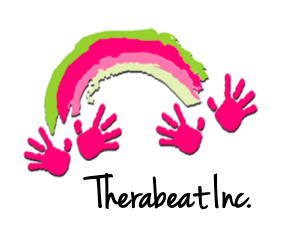The second of the three foundational principles of music therapy is the bringing about of self-esteem through self-actualization. One underlying goal that we are constantly working on with our clients is increasing self-esteem. In order for children to be able to relate successfully to other people and become functional members of society, they must first obtain a certain level of self-awareness and confidence.
Two pioneers of the music therapy field, Paul Nordoff and Clive Robbins, explain the process of developing self-esteem through music as the “awakening of the music child”. They define the “music child” as the innate sensitivity to music that is present in every human being. Essentially, there is a “music child” hidden in each of us that has the potential to connect with and grow through music. They explain that the awakening of the music child through active music-making “increases the individual’s self-awareness and allows an individual to discover meaning and joy in the therapeutic experience, which leads to developing communicative intention in his or her musical response” (Darrow, 2008, pg. 64).
Music is an extremely versatile tool that is an effective medium through which to develop and foster self-esteem in children. Firstly, music is a means of self-expression. Since it can be both a verbal and nonverbal form of communication, it provides many opportunities for the expression of emotions and feelings. Perhaps a child comes to music therapy after a long day at school; the child is feeling frustrated because he has been unable to understand the academic concepts taught in his classroom. During improvised instrument play on the xylophone, the child plays extremely fast and loud; he is able to release his feelings of frustration through instrument play. Music is a safe and non-threatening way for children to engage in emotional expression.
Secondly, music activities are “very adaptable and can allow for success at many different levels of achievement”(Peters, 2000, pg. 60). For many children, music is something that is not only enjoyable, but it is something in which they can succeed. A child who struggles with academics or communication or socialization may find great solace in the feeling of accomplishment they enjoy when they engage in music. As music therapists, it is our job to set our clients up for success. We craft each intervention with the clients’ abilities in mind, ensuring ensure that they will experience some level of success in each session. When teaching new skills, we begin with low expectations before we begin to challenge the client. By allowing them to experience initial success, we increase their self-esteem and the likelihood that they will re-engage in the future. We use prompts, cues, visual aids, and even adapted instruments to give support to our clients and guide them toward success.
Lastly, music therapy provides a safe environment in which the clients can explore their talents and abilities as they learn more about themselves and begin to develop self-esteem. In music therapy, we often provide our clients with opportunities to make choices. Giving children the opportunity to be in control in a safe environment will help them build confidence in their leadership skills. Perhaps we ask a child if she would like to play piano first or drums first; neither answer is wrong! The child gets to make a choice encouraged by the knowledge that there is no wrong answer. Consider a drum improvisation between a therapist and child. The child gets to choose if he will drum fast, slow, loud, or soft, and the therapist matches his choice. By constantly providing our clients with choices, we are helping them become more comfortable with independence. They can learn to make decisions and take the lead in a safe environment with the guidance and support of a therapist.
Twice a year, our clients have a chance to perform in a recital for their friends and family. This is a culmination of the practice and process of engaging in music therapy interventions. By performing in these recitals, our kiddos have a chance to showcase their abilities they have worked on so hard on to achieve. Each recital, we see the confidence and self-esteem grow in our kiddos as they create and present wonderful music for the community to see!
- Alaina Brommer, Music Therapy Intern
References
Darrow, A. (2008). Introduction to approaches in music therapy (pp. 64). Silver Spring, MD: American Music Therapy Association.
Peters, J.S. (2000). Music therapy: an introduction (pp. 60). Springfield, IL: Charles C. Thomas.







